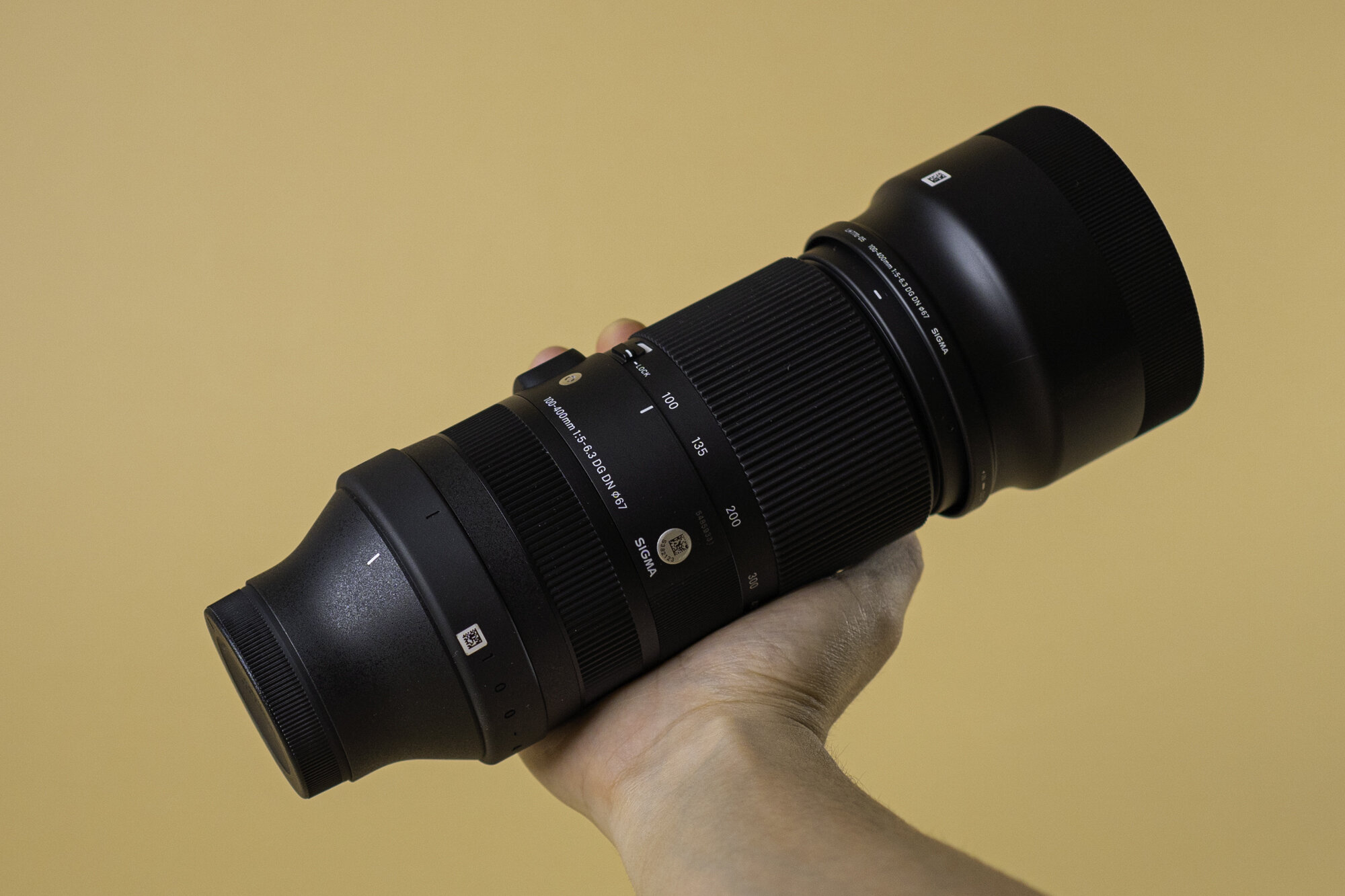Intro
Sigma has been a popular alternative to the expensive Sony G and GM series lenses. Sigma’s recent mirrorless options have been great for their affordable price without sacrificing too much image quality. Their newest addition to their mirrorless lineup is the 100-400 telephoto zoom.
This is Sigma’s first foray into mirrorless telephoto options for the Sony E and Leica L mount. This zoom range does exist in their DSLR version, but Sigma has claimed that this lens has an entirely new glass construction to optimize image quality for mirrorless cameras.
Specs
Focal Length: 100mm-400mm (APS-C Equivalent: 150mm-600mm)
Minimum Focus Distance: 112cm at 100mm, 160cm at 400mm
Max Aperture: f/5-6.3 (f/5 from 100-125, f/5.6 from 125-350, f/6.3 from 350-400)
Weight: 1140g
Dimensions (Diameter x Length): 86mm-199.2mm
Filter Size: 67mm
Diaphragm Blades: 9
Weather Proofing: Splash & Dust Resistant
Price: $949 USD
Build Quality
If you’ve ever held a Sigma lens before, you’ll know how heavy and robust they can be. I’m happy to say that this 100-400 feels incredibly comfortable in the hands and is definitely portable. This lens feels more like a large midrange zoom than a long telephoto.
This lens does not come with a tripod collar and alternatively has a rubber band covering where the tripod collar would mount. I usually carry my telephoto lenses with one hand on the tripod collar for stabilization but this lens has its weight distributed so well that it felt fine to carry around all day without one.
The Sigma 100-400 is comprised of mostly plastic but also some metal. Most of the weight is distributed toward the mount, even when the lens is zoomed all the way out to 400. This allows the user to not have to deal with constant weight shifting as you zoom back and forth. I’ve personally have had no problems hand holding this lens and I honestly believe this is the most comfortable zoom lens I’ve ever held.
On the side of the barrel, you’ll find a AF/MF switch, Focus Distance switch, Function button, and an Optical Stabilization switch. There’s also a nifty little Lock switch to prevent lens creep when storing the lens away in your camera bag
Performance
Compared to the Sony GM 100-400, you’re losing 1/3 stop of light on paper when switching to the Sigma 100-400 DG DN. However, I’ve found that this lens has more of a maximum aperture of f/5.6-6.3. 1/3 stop of light sounds like a small sacrifice until you realize the lens has a maximum aperture of 5.6 with a short turn of the zoom ring from 100mm-125mm. So functionally, you’ll find yourself at 5.6 or 6.3 for a majority of your photos.
I’m happy to say that the autofocus performance of this lens has been satisfactory. I lost focus while tracking some birds in flight but I attribute that to user error over the lens not performing. Otherwise, it locked onto birds’ eyes and was snappy when switching targets. I’ve done a autofocus test on my video review if you’d like to see more.
Personally, I find it hard to find major differences in image quality when looking at my images taken with the Sigma compared to the Sony GM lens. Beside the obvious drop in maximum aperture, sharpness and contrast look very similar to me. I will say to take this portion of my review with a grain of salt since I don’t pixel peep as much as other reviewers. Vignetting is pretty apparent in photos aimed toward the sky but I’m eagerly awaiting a Lightroom profile from Adobe.
Final Thoughts
For those who are still debating between the Sony 100-400 GM and this Sigma competitor, there are several factors you should consider. Is wider maximum aperture and best-in-class autofocus speed your priority? If you’re willing to spend $2498 USD, then the Sony 100-400 GM is your best choice. If you’re looking for a relatively affordable and light telephoto zoom alternative, then you should definitely buy the Sigma at $949.
You’ll also have to consider that Sony has 1.4x and 2x teleconverter options for most of their telephoto lenses. While Sigma has released a set of teleconverters, they’re only compatible with the Leica L mount version. I e-mailed Sigma and they responded that they’re not allowed to release certain accessories like the teleconverter due to a prior agreement made with Sony.
Personally, the teleconverters aren’t a major negative and I’ll most likely end up buying my own Sigma 100-400. The main factors that influenced me were size, length, filter diameter, and of course price. I had back-to-back rentals of the Sony and Sigma 100-400s and never felt like the autofocus nor image quality was a big enough difference. The weight was definitely the most memorable factor when transitioning to the Sigma.
This will be the second Sigma lens I’ll own for my Sony cameras and I can’t wait to see what else they’re going to release in the coming year.









